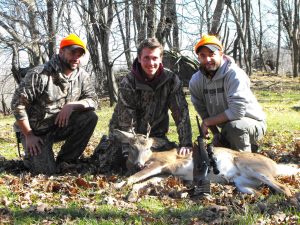PHOTOGRAPHY
© 2019 Walt Hampton
*Certainly one of the best ways to remember our Appalachian home is through photography. During the first 20 years of my writing for the outdoor market I used 35mm film cameras, then suddenly the magazines needed digital images. Digital is wonderful; honestly I don’t know how we got along without it. Shoot photos of your Appalachian experience, family, places, things; you will be glad you did.
In outdoor writing the photography that accompanies the article is many times the most important part of the presentation. The proper illustration fleshes out the writing and gives the reader perspective into what the author wants to communicate. True, the writing, when done with the proper feeling and wordage, can paint a mental image, but the photograph can reinforce this perspective and move the reader.
I do not claim to be an ‘expert’ photographer; indeed, when compared to those that make their living doing work with the camera I am an amateur. While I have sold thousands of images with my writing I still do not consider myself a ‘photographer’, but I do have an opinion on the subject.
I break down my writing into two broad categories; 1) the Grist-that is, the gun-biology-technical work such as gun reviews or discussions of biological concepts like deer or land management; and 2) story-telling, where I try to convey to the reader a concept, emotion or experience to which they can relate on a personal level. Within these two groupings I will use two types of photography, and those are 1) the staged, or posed photograph and 2) the spontaneous photograph. The staged or posed photograph is one where people or objects are deliberately arranged to focus on a particular aspect I am trying to highlight, an illustration of the subject matter of the article. This is common in gun writing such as test and evaluation (T&E) writing, where the object or physical aspects of the object that is the subject of the article are highlighted.
For instance, the photograph of the rifle and shotgun with the squirrels illustrates two types of firearms (rifle and shotgun) that are typically associated with squirrel hunting, and the two schools of thought on how squirrels are hunted. The staged photograph as used in outdoor writing can be enhanced with the addition of people in the image, because the reader can then more personally identify with the subject and what is trying to be conveyed. The photograph of my wife Cecelia coming out of the woods with a fox squirrel can also be used to illustrate the same concept as the previous one, but now the reader can get an idea of “Gee, I wish I was there to do that!”. Which do you think is more effective? Of course both of these images were posed and not spontaneous but here is the secret of the good photograph: the art of the posed photo is to make it appear as spontaneous. Now we’re getting somewhere.
Hemingway said “The hardest thing is writing from the heart and not making people sick”. In putting together a story or memory piece of outdoor writing the right image presented with the text can take the words and print an indelible image for the reader. For me this is one of the hardest things about writing-getting the idea of what I want to convey to the reader across as I perceive that idea. A few years ago a friend of my youngest son, a fellow that we always considered part of our family, was grievously wounded in Afghanistan while on a mission with his Special Forces team. I wrote the story of his struggle to rebuild his life, based on the fact that hunting was, to him, one of the defining elements of feeling “normal” again. When he was finally successful in his hunt, after many failures, and demonstrated to himself that he could still participate in this activity, and that he still owned this part of himself, I was there and I had the camera. Of course we took the obligatory ‘hero’ photos, but as soon as it happened I was lucky enough to be right there and simply sit down and started shooting photos, far enough away from the action to not be noticed. Here are two of the photos from that morning, the first is the posed ‘hero’ shot we see so much of in hunting stories and the second (below) is the spontaneous photo I was lucky to get at the moment when my sons congratulated the hunter and welcomed him back to us.
As I fired away with the camera I hoped to capture the emotion and bond these young men felt at that instant in time. This remains one of my favorite images I have captured in 30 years of outdoor writing.
So, if I can offer any advice to the aspiring outdoor writer/photographer, I can only say this: We all must do the grist to pay the bills, but do not be afraid to take chances with your writing and especially with your photography—it may help to have thousands of dollars of equipment but the fanciest camera cannot make up for not thinking things through. And don’t be afraid to trip the shutter.
*The photo of my son Jesse Hampton flyfishing Frying Pan Creek in Colorado was taken by Bobby Dove.






